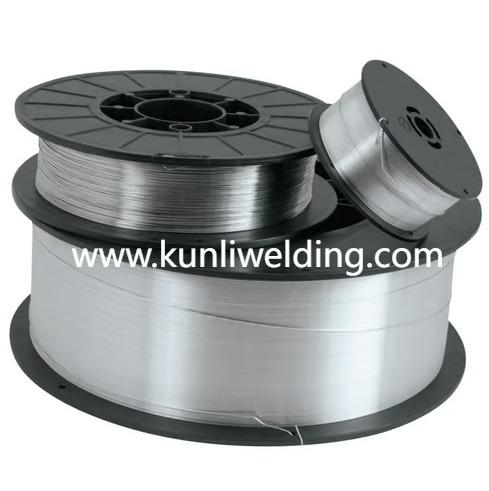-
Feed de Notícias
- EXPLORAR
-
Páginas
-
Grupos
-
Blogs
-
Fóruns
Achieve Stable Feed with Advanced Recycled Aluminum MIG Welding WireDescription

As the push for sustainable production accelerates, Aluminum Mig Wire Manufacturers are exploring circular economy practices to incorporate recycled alloys into MIG welding processes without sacrificing feed stability. Innovations in wire drawing and surface conditioning now allow recycled aluminum to perform with the consistency once reserved for virgin materials. In light of climate action initiatives and growing demand for eco conscious manufacturing, these advances are reshaping how industrial fabricators approach aluminum joining.
Industry leaders have developed refined drawing techniques that produce uniform wire diameter from reclaimed aluminum feedstock. By closely controlling tension and lubrication, manufacturers ensure that each spool delivers a steady wire feed through automated welding systems. This precision is vital in high volume operations—such as those supporting electric vehicle chassis assembly or solar panel frame construction—where any feeding irregularity can cause network downtime or weld defects.
Surface treatment innovations also play a crucial role. Recycled feedstock may contain trace impurities that affect arc stability. To address this, suppliers now apply tailored cleaning processes that remove oxide particles and improve surface finish. The result is a homogenous wire that offers smooth ignition and consistent metal transfer. Fabricators report fewer interruptions during long weld runs, reducing scrap rates and improving overall productivity in facilities under tight production schedules.
Beyond mechanical improvements, digital monitoring tools have been integrated into spool packaging. Embedded chips record manufacturing parameters and link to cloud based dashboards. Welding technicians can scan a code before starting a job to retrieve wire origin data, process history, and recommended parameter settings for specific base metal combinations. This transparency not only supports quality control but also aligns with corporate sustainability reporting obligations by verifying the percentage of recycled content used in each wire batch.
The shift toward reusable materials resonates with broader supply chain transformations. As global infrastructure investments prioritize renewable energy and low carbon transport, fabricators must demonstrate responsible resource management. Using recycled aluminum wire reduces dependence on mining and lowers the energy footprint of welding operations. Stakeholders from project owners to end users value such commitments, especially when procurement guidelines incorporate environmental criteria for vendor selection.
Training and support services complement the technical offerings. Manufacturers provide on site workshops and virtual seminars that guide welding teams through best practices for handling recycled wire. Topics include spool storage to prevent moisture uptake, recommended shielding gas mixtures for optimal arc performance, and alignment of travel speed with wire feed settings. These educational resources help small and large shops alike to integrate sustainable materials without a steep learning curve.
Collaborations with research institutions further drive innovation. Pilot programs explore the viability of mixed scrap streams—combining post industrial chips with post consumer scrap—to expand recycling channels. Early results indicate that with proper alloy sorting and pre drawing treatments, a high degree of recycle content can be achieved while maintaining mechanical and electrical properties required for critical applications. Such breakthroughs signal a future where circular welding consumables become the norm rather than the exception.
As demand for green technology accelerates, supply partners that champion recycled wire solutions position themselves at the forefront of industrial evolution. By marrying advanced feed stability techniques with robust quality assurance processes, they enable fabricators to meet aggressive production goals and sustainability targets simultaneously. The result is welding wire that not only fuels manufacturing growth but also contributes to a healthier planet through responsible resource use.For more details on integrating high performance recycled aluminum MIG wire into your operations and to explore our full product range visit www.kunliwelding.com .
- Art
- Causes
- Crafts
- Dance
- Drinks
- Film
- Fitness
- Food
- Jogos
- Gardening
- Health
- Início
- Literature
- Music
- Networking
- Outro
- Party
- Religion
- Shopping
- Sports
- Theater
- Wellness

